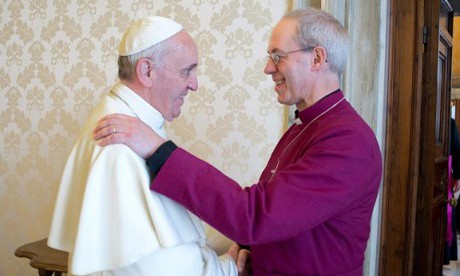November this year will mark the 50th anniversary of the solemn promulgation of the Second Vatican Council Decree on Ecumenism, Unitatis Redintegratio.
It still remains the authoritative document of the Catholic Church setting out the principles of ecumenical dialogue, though much of its teaching was expounded by St John Paul II in his encyclical Ut Unum Sint (1995).
Its first paragraph makes clear that the restoration of unity among Christian people was one of the major concerns of the Council.
But a reading of the documents of Vatican II shows clearly that the bishops meeting in Rome did not deviate from the belief that there is only One Church of Jesus Christ and identified that Church with the Catholic Church in communion with the successor of Peter.
This is made clear both in the dogmatic constitution on the Church, Lumen Gentium, and also the decree on ecumenism.
The Catholic Church is described as “God’s only flock” and it is from this “one and only Church” that other Christian communities became separated over the centuries.
In a much-quoted passage Lumen Gentium described the Church in this way: “This Church constituted and organised as a society in the present world, subsists in the Catholic Church, which is governed by the successor of Peter and by the bishops in communion with him.
“Nevertheless, many elements of sanctification and of truth are found outside its visible confines.
“Since these are gifts belonging to the Church of Christ, they are forces impelling towards Catholic unity.”
In an earlier draft of that constitution the text read “This Church is the Catholic Church” but was changed to “This Church subsists in the Catholic Church”.
There have probably been hundreds of articles written about exactly what “subsists” means.
It is usually taken to mean that the one Church of Jesus Christ “has concrete form” or is “concretely realised” in the Catholic Church. Continue reading
Sources
